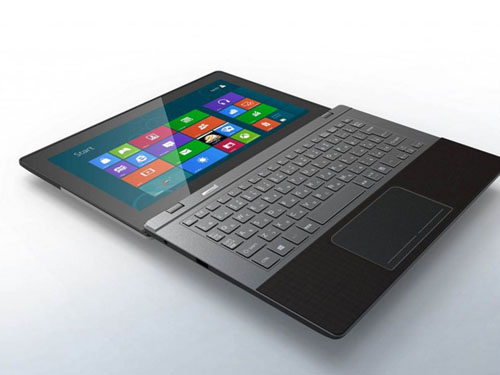Surface Tablet Sales Flat as Microsoft Loses $900 Million on Device

I’ve made no secret of the fact that I am deeply interested in getting a Windows 8 tablet, specifically a Surface Pro. But at about a grand with a keyboard, it’s a bit too pricey a proposition for me right now. But as it turns out, it’s too pricey a proposition for most consumers too: Microsoft published its Q4 earnings report yesterday, and revealed that it lost $900 million on the Surface Tablet.
According to a post on Bloomberg about the earnings report, apparently Microsoft managed to ship only 900,000 Surface tablet units in December, helping to further illustrate the reasons behind the company’s recent decision to drop the price of the Surface RT by $150, not to mention CEO Steve Ballmer’s recent internal shakeup. Of course, the RT is only one half of the company’s Surface strategy: the aforementioned Surface Pro, which is a full Windows PC in a tablet, is still full price. Clearly the company is concerned about its tablet, but not so concerned as to drop its price across the board.
The news that Surface is stinking up Microsoft’s bottom line isn’t terribly surprising. Reviews for both versions of the tablet have been relatively mixed since they came out late last year and early this year. In short, the Surface gets a lot right, and gets a lot wrong, and a judgment like that is no way to survive in a market dominated by iPads and dozens of other Android-powered competitors.
The problems, I imagine, stem from the fact that Windows itself fractured its own market. Is the Surface a tablet or a PC? Neither the Pro or the RT are definitively one or the other, and neither the names nor the functions of either version of the tablet are clear enough to average consumers looking to get in on the tablet game. Why bother with the different, confusing Surface tablets when an iPad is as straightforward as it gets?
Microsoft is suffering from trying to be all things to all people, and managing to be kind of nothing to anyone. I can imagine that the Pro and the RT would’ve been a bit more successful right out of the gate at lower price points—the fact that the RT was roughly the same price as an iPad offered little to no incentive for consumers to consider it as an alternative to what’s already a proven commodity.
All that said, I still believe that there’s room for a Windows-powered tablet in the market. As an example, let’s take a quick look at the video game world. When Nintendo released its 3DS handheld console back in 2011, it launched to great fanfare and brisk day-one sales. Then sales tapered off extremely quickly, third-party developers canceled games, and others didn’t even commit to making software for the thing until it had a healthier install-base. Many critics proclaimed that the handheld was dumb, doomed, and soon-to-be-dead.
Fast forward a few months: Nintendo lowered the handheld’s price to get people buying it, put out some amazing first-party software, and now the 3DS is one of the most consistently best-selling pieces of gaming hardware on the market currently. Third-party support is robust, and the console is the winner it was destined to be.
And to continue with the gaming example, Microsoft, a relative newcomer to the hardware game, is trying the tablet category out for the first time. That it’s been a failure so far isn’t much of a surprise, especially considering that its first foray into gaming hardware with the Xbox was far from a homerun itself. Its second try with gaming hardware, the Xbox 360, has been a huge hit in the US and Europe, dominating home console sales in just about every territory around the world, except Japan. If the company should bother with a Surface 2 this year or next year, I have no doubt that the company will have learned from its mistakes the first time around, and may very well deliver the Windows 8 tablet that consumers might actually want.